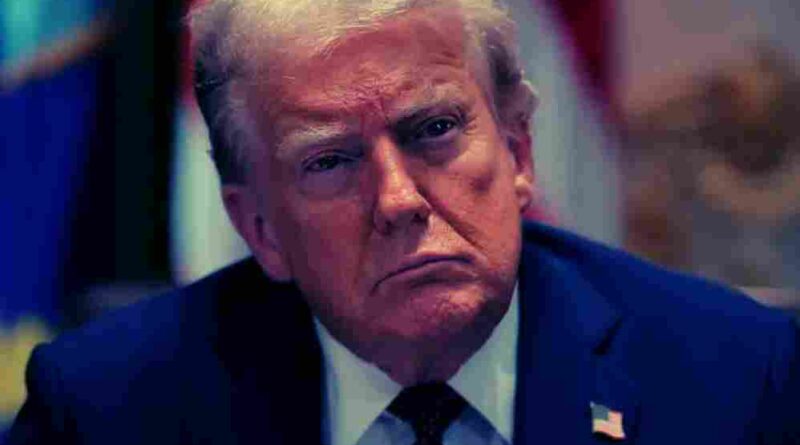Court Rules Most of Trump’s Tariffs Illegal – But They’re Still in Effect for Now
A major federal appeals court has dealt a serious blow to one of the signature policies of Donald Trump’s second term. In a closely watched decision, the court ruled that the majority of tariffs imposed under Trump’s trade agenda were not legally authorized. Still, the duties remain in place for now as the legal battle continues.
What the Court Decided
In a 7–4 ruling, the U.S. Court of Appeals for the Federal Circuit found that former President Trump exceeded his authority when he imposed broad, across-the-board tariffs using emergency powers. The judges concluded that the law Trump relied on—the International Emergency Economic Powers Act (IEEPA)—does not give the president the power to impose taxes or duties.
The court explained that tariffs are fundamentally different from sanctions. While IEEPA allows a president to freeze assets, restrict financial flows, or block certain transactions during an emergency, it does not explicitly grant the ability to raise or collect customs duties. That authority, the judges noted, has traditionally belonged to Congress.
Which Tariffs Are Affected
The ruling specifically targets the so-called “Liberation Day” tariffs—a sweeping 10 percent duty that was applied broadly to imported goods—as well as additional “reciprocal” tariffs that matched or exceeded the rates of U.S. trading partners.
However, not all of Trump’s trade measures are impacted. Tariffs on steel, aluminum, and other industries that were imposed under separate laws remain in effect for the time being.
Why the Tariffs Haven’t Disappeared Yet
Despite declaring the tariffs unlawful, the appeals court temporarily left them in place until mid-October. This grace period gives the Trump administration time to appeal the decision, likely setting up a showdown at the Supreme Court.
For now, importers are still paying duties, and consumers are still seeing the impact in prices. That uncertainty—whether tariffs vanish or stay—makes it difficult for businesses to plan ahead.
The Financial Stakes
Billions of dollars have already been collected under these tariffs. If the courts ultimately strike them down for good, the federal government may be forced to issue refunds to companies that paid the levies. That would not only create a massive administrative burden but could also put pressure on the federal budget.
For small and mid-sized businesses that have struggled under the cost of tariffs, potential refunds would provide relief. But for policymakers, the prospect of giving back such a large sum underscores just how much economic weight these trade policies carry.
What Happens Next
- Supreme Court Review: The case is expected to be appealed to the highest court. If the Supreme Court takes it, the ruling could redefine the scope of presidential power over trade for decades.
- Congressional Role: Lawmakers may be pressed to step in and clarify trade authority. Some may push to restore more power to Congress, while others could support giving presidents broader emergency tools.
- Business Planning: Importers and exporters are left in limbo. Some may hold off on large shipments or pricing changes until they know whether tariffs will remain in place.
- Global Impact: International trading partners are watching closely. If the tariffs collapse, negotiations struck under their shadow could be reopened, potentially reshaping U.S. relationships abroad.
Why This Matters for Everyday People
For consumers, tariffs are not just an abstract policy—they can influence the cost of everything from electronics to groceries. When duties are added to imports, businesses often pass those costs down the line. That’s why a legal battle over trade law can ultimately show up in the form of higher or lower prices at the store.
For workers, particularly in industries dependent on imports, the uncertainty creates job risks. Factories, retailers, and small import-driven businesses may hesitate to expand or hire while trade policy hangs in the balance.
The Bigger Picture
This ruling isn’t just about tariffs. At its heart, it’s about how much power a president has to act unilaterally in matters that touch the economy. The court’s decision pushes back against the idea that sweeping trade taxes can be imposed without congressional approval.
If the decision holds, it could signal a shift in how trade policy is made—away from rapid, executive-driven actions and back toward slower, more deliberative processes in Congress.
The Bottom Line
- Most of Trump’s tariffs have been ruled illegal by a federal appeals court.
- They remain in effect until at least October while appeals play out.
- Billions of dollars in collected duties could be subject to refunds.
- The Supreme Court is likely to have the final say.
- Consumers, businesses, and global partners all have a stake in what happens next.
For now, the tariffs stay in place—but the future of Trump’s trade strategy, and the balance of power over U.S. economic policy, is very much on the line.
Disclaimer
The information and content shared on digitalgithub.com — including articles, blogs, news, guides, and other resources — is intended for general informational and educational purposes only. We do not guarantee the completeness, reliability, or suitability of any information. Always seek the guidance of a qualified professional before making decisions based on the information you read. Use this site at your own risk.

